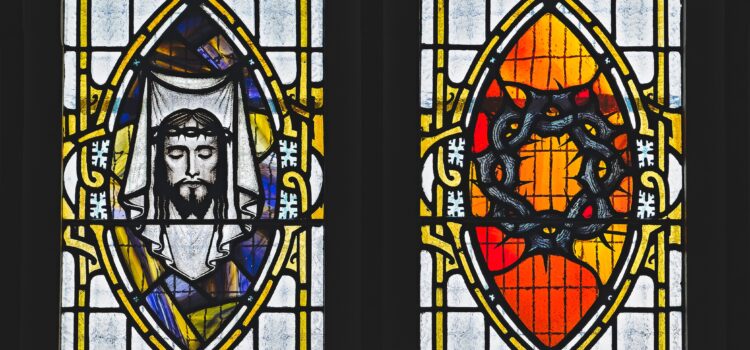

This article is an excerpt from the Shortform book guide to "The Immortality Key" by Brian C. Muraresku. Shortform has the world's best summaries and analyses of books you should be reading.
Like this article? Sign up for a free trial here.
What is “proto-Christianity”? How did Christianity replace paganism and other mystical traditions?
Christianity arrived in Greece in AD 49 with Saint Paul, but it didn’t become the official religion of the Greco-Roman world until AD 392. Before that, the polytheistic pagan and Christian traditions existed simultaneously throughout the region. Brian Muraresku refers to the Christian practices during this time period as “proto-Christianity.”
In this article, we’ll discuss the characteristics, beliefs, and practices of proto-Christianity that were likely to have appealed to a polytheistic pagan community with a rich mystical tradition.
The Gnostic Gospels
An important source for understanding proto-Christianity, and its overlap with Greek paganism, are the Gnostic Gospels. These are a collection of books purportedly written by followers of Jesus, likely between AD 120 and 150. Although the writers themselves professed to be devotees of Jesus and claimed to be revealing truths from him, leaders of the early Christian church omitted these books from the Biblical canon, and they were lost to history until they were unearthed in Egypt in 1945.
Muraresku says the Gnostic Gospels were originally part of the Christian scriptures but were later eliminated because they encouraged experiencing direct union with God. He explains that the more orthodox leaders of the Church wanted the priests to be the only arbiters of God because people who have their own direct experience of God are harder to convert and control. So they ultimately sought to keep the populace from these mystical experiences.
Muraresku believes these gospels provide a window into the beliefs and traditions that defined proto-Christianity, and that they explain why it would have appealed to the ancient Greeks—because, he says, Christianity in its original form was itself a mystical tradition.
Jesus as Dionysus
So, Muraresku establishes that the form of Christianity that arrived in Greece in AD 49 was likely characterized by mysticism, making the philosophy and practices understandable to the existing population. But why would people who already have a pantheon of gods and goddesses have any interest in a new god or prophet? Muraresku says this new prophet would have to be relatable and recognizable, and he argues that this was the case because Jesus was essentially another form of Dionysus, the god of ecstasy who was worshiped in the Eleusinian rituals.
The two had several similarities that would have made Jesus a recognizable (and acceptable) figure to the Greeks, including:
Immaculate conception:
- Dionysis is the son of the god Zeus and a young human woman named Semele, who is described as a “maiden” or “virgin.” He’s conceived when Zeus visits Semele in the form of an eagle and is described in the mythology as the only begotten son of God. His birthday is celebrated around the Winter solstice.
- Jesus is the son of God and a young virgin woman, Mary. He’s conceived when God visits Mary in the form of a dove. He’s described in the Gospel of John as the only begotten son of God. He’s said to have been born around the Winter solstice.
Turning water into wine:
- Turning water into wine was Dionysus’s specialty. Dionysus was associated with a miracle that occurred every year on January 5 when a spring in the temple would start flowing with wine, called “God’s Gift Day.”
- The Gospel of John tells the story of Jesus performing the miracle of turning water into wine at a wedding feast. The wedding is said to have occurred on January 6, which Christians now celebrate as “Epiphany.”
Blood as wine offers immortality:
- The Bacchae (the story of Dionysus, written by Euripedes in 405 BC) refers to wine as the “blood of Dionysus” and says drinking it will lead to immortality.
- The Gospel of John describes bread and wine as the “true food and true drink, [Jesus’] flesh and blood, that promises eternal life.” John’s words are the identical Greek words used in The Bacchae in reference to Dionysus.
Visual similarities:
- Both Dionysus and Jesus are depicted with long flowing hair and associated with a purple cloak and a crown of thorns. The crown of thorns was the signature way of identifying Dionysus and his disciples and is a symbol associated with the crucifixion of Christ.
Muraresku argues that these similarities can hardly be coincidental. He says people of this time and place would not have accepted a god without wine, so these descriptions of Jesus, most obviously in the Gospel of John, written between AD 90-100, would have been a perfect way to get Greeks to relate Jesus with Dionysus.
Refrigeriums: Depictions of the Divine Feminine and the Eucharist
Another overlap between Greco-Roman pagan customs and Christianity, which may be the most obvious link to the Eucharist, is the ancient Roman custom called the refrigerium. This was a funerary feast common in the pre-Christian Roman world that served the function of honoring and communicating with the dead. Two central features of the refrigeriums were wine and women. Wine was said to enable contact between the living and the dead, and sacred priestesses prepared and dispensed it.
Muraresku says any new religion introduced to the Greeks (in this case, Christianity) would have to include a divine feminine element in order for the Greeks to adopt it. So, he argues that divine femininity was another essential feature of proto-Christianity. In the refrigeriums, we see the combination of sacred wine and sacred femininity, coming together in a mystical ritual that continued for hundreds of years after the introduction of Christianity to the Greeks and Romans.
There are hundreds of miles of catacombs underneath Rome, and artwork still remains on the walls and ceilings. Scholars debate whether some of the art depicts pagan refrigerium rituals or Christian Eucharist rituals because it contains elements of both. Muraresku describes scenes of female-led, or possibly entirely female, rituals centered around wine, bread, and fish. Believed to be from the third century AD, he argues that these artworks are likely depictions of that time period when the pagan and Christian rituals were inseparable.
Another area of the catacombs has art dated to the late third or early fourth century that clearly depicts women officiating ceremonies. These scenes include the words “love” and “peace,” as well as the phrases “mix it up for me!” and “hand over the calda.” Calda, Muraresku explains, literally translates to warm (or hot) stuff, but scholars say it refers to a drink that was a mixture of wine, hot water, and herbal intoxicants, commonly drunk in the winter. He says these scenes show women presiding over groups of men, indicating that women were in charge of the ceremonies and also of “mixing” and dispensing the wine.
Based on what he learned from the Roman catacomb art and the related scholarship, Muraresku argues that these refrigeriums were the origin of the Eucharist. He argues that these were rituals for remembering the dead, which evolved into rituals for remembering the death and resurrection of Christ. And the wine, he says, was what enabled the living and the dead to be in contact.

———End of Preview———
Like what you just read? Read the rest of the world's best book summary and analysis of Brian C. Muraresku's "The Immortality Key" at Shortform.
Here's what you'll find in our full The Immortality Key summary:
- The secret that kept ancient Greeks and early Christians from fearing death
- The origins of Christianity and its overlap with pre-existing pagan customs
- The real reason why women can't be priests






